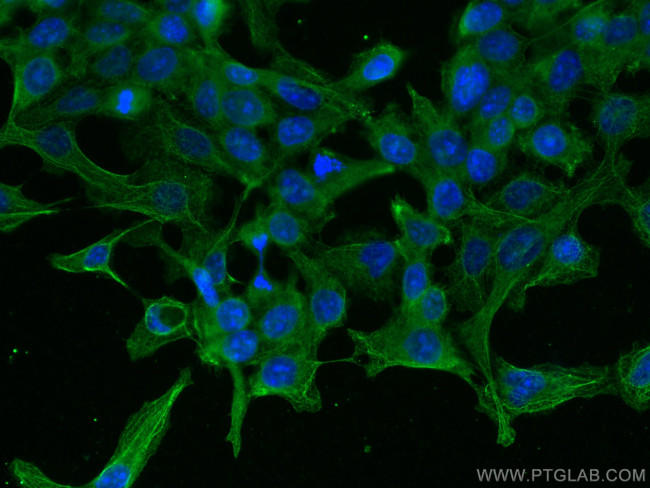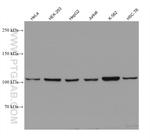Search Thermo Fisher Scientific
Product Details
67909-1-IG
Species Reactivity
Host/Isotype
Class
Type
Clone
Immunogen
Conjugate
Form
Concentration
Purification
Storage buffer
Contains
Storage conditions
Shipping conditions
Product Specific Information
Aliquoting is unnecessary for -20°C storage.
Target Information
The human alanyl-tRNA synthetase (AARS) belongs to a family of tRNA synthases, of the class II enzymes. Class II tRNA synthases evolved early in evolution and are highly conserved. This is reflected by the fact that 498 of the 968-residue polypeptide human AARS shares 41% identity witht the E. coli protein. tRNA synthases are the enzymes that interpret the RNA code and attach specific aminoacids to the tRNAs that contain the cognate trinucleotide anticodons. They consist of a catalytic domain which interacts with the amino acid acceptor-T psi C helix of the tRNA, and a second domain which interacts with the rest of the tRNA structure.
For Research Use Only. Not for use in diagnostic procedures. Not for resale without express authorization.
References (0)
Bioinformatics
Protein Aliases: AARS; alanine tRNA ligase 1, cytoplasmic; Alanine--tRNA ligase, cytoplasmic; alanine--tRNA ligase, cytoplasmic {ECO:0000255|HAMAP-Rule:MF_03133}; Alanyl-tRNA synthetase; alanyl-tRNA synthetase {ECO:0000255|HAMAP-Rule:MF_03133}; alanyl-tRNA synthetase, cytoplasmic; AlaRS; alaRS {ECO:0000255|HAMAP-Rule:MF_03133}; Protein lactyltransferase AARS1; Protein sticky; Renal carcinoma antigen NY-REN-42; Sti
Gene Aliases: AARS; AARS1; AI316495; C76919; CMT2N; EIEE29; sti
UniProt ID: (Human) P49588, (Mouse) Q8BGQ7, (Rat) P50475
Entrez Gene ID: (Human) 16, (Mouse) 234734, (Rat) 292023

Performance Guarantee
If an Invitrogen™ antibody doesn't perform as described on our website or datasheet,we'll replace the product at no cost to you, or provide you with a credit for a future purchase.*
Learn more
We're here to help
Get expert recommendations for common problems or connect directly with an on staff expert for technical assistance related to applications, equipment and general product use.
Contact tech support


